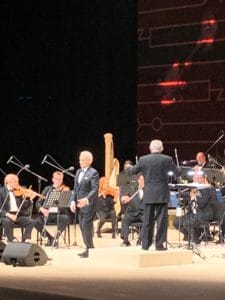We’ve all heard of Petra, the incredible “Rose Red City” of the Nabateans in what is modern day Jordan. But it’s far less well known that the Nabatean’s empire of trade routes and cities extended deep into Arabia. Mada’in Saleh is the Petra we have never heard of before, and Saudi Arabia plans to put it on the map in a very big way. With plans for 2 million tourists a year (now on hold due to the Covid pandemic), the ancient ruins make up one leg of the massive tourism plans – the other main leg being the Red Sea.
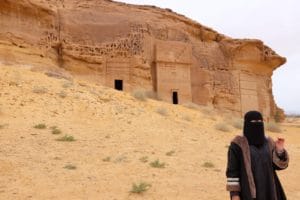
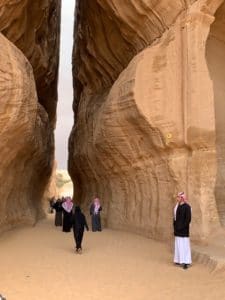
The opportunity to visit Mada’in Saleh was the main reason for my trip. I had never actually heard of it during my studies. It was proof of the absolute closed book that Saudi has been for so long.
The Saudi’s have decided that, unlike at Petra, tourists are not free to explore on their own. Rather, the visits are very closely regimented. Tourists are put into groups, each with their own bus, driver and guide and then the bus moves along a specified route, stopping at a large car park outside each area of interest. Everyone gets off at each stop, and their guide takes them to see the site, and then herds them back into the bus, which continues to the next stop and so on. Essentially its very much a group tour experience, even if you are an individual traveler. Whether Covid causes plans to change we will have to see, but the site has been developed with these large bus parking places. I prefer traveling and sightseeing privately, so I do not like the way that it has been done, but I do understand that protection of the site is much easier this way.
So, after arriving at the Visitors Center (which could be much improved), you purchase your ticket and then make you way to the next available bus, which then fills up with other travelers, who become your group. We were all told to download the app, which I soon found to be a fantastic idea and hope that the idea gets adopted around the world. Essentially, the app, which works at all the various sites of interest, shows with an almost hologram type effect, what life was like – as you hold up your phone as if to take a photo, images and figures emerge that almost seem to blend in with the background archeological site itself, in some small way bringing the site alive.
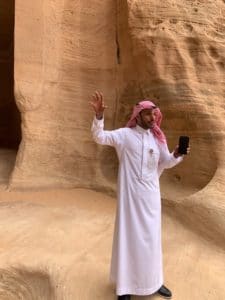
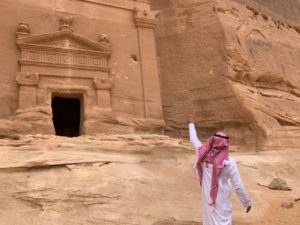
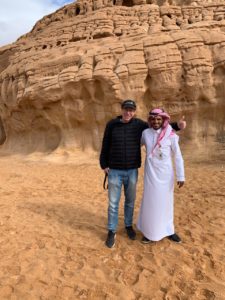
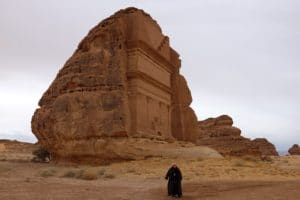
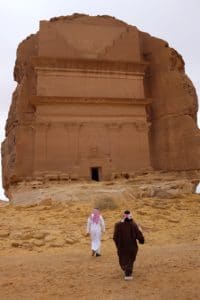
At another spot, actors play out an entire scene of ancient life – dressed up and with swords etc. When I went it was all in Arabic and so much of the storyline was lost on me, but no doubt other languages will follow soon, and its another great way to bring the place alive – and its awesome for kids!
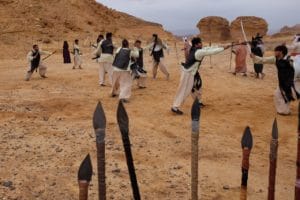
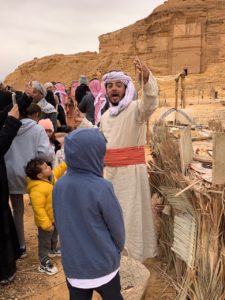
The sites themselves are spectacular – massive pieces of rock with tombs and living spaces carved into them – like Petra in a way, except that some rocks are free standing, rather than being part of a mountain or canyon.
That evening it was time to go to the Opera! In the desert! A magnificent theatre has been built, perhaps most impressive from the outside, where the glass mirror-like walls reflect the surrounding mountains, sand and sky. It’s as if the building is totally hidden in plain sight! Inside the theater building, in addition to the arena, was a buffet restaurant and a fascinating art installation – a room filed with thousands of lights!

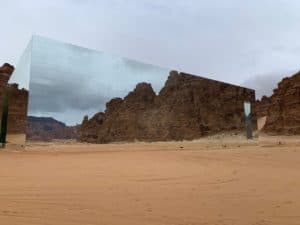
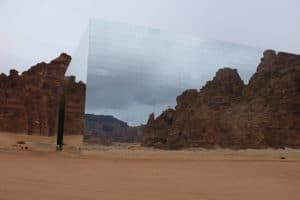
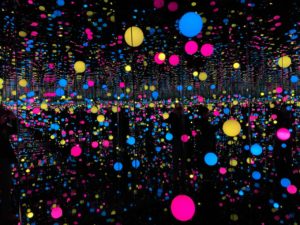
On the agenda that night was a performance by Jose Carreras, the last remaining of the famous Three Tenors! Getting on in years clearly, and unable to hold the high notes, but still very moving and overall excellent!

